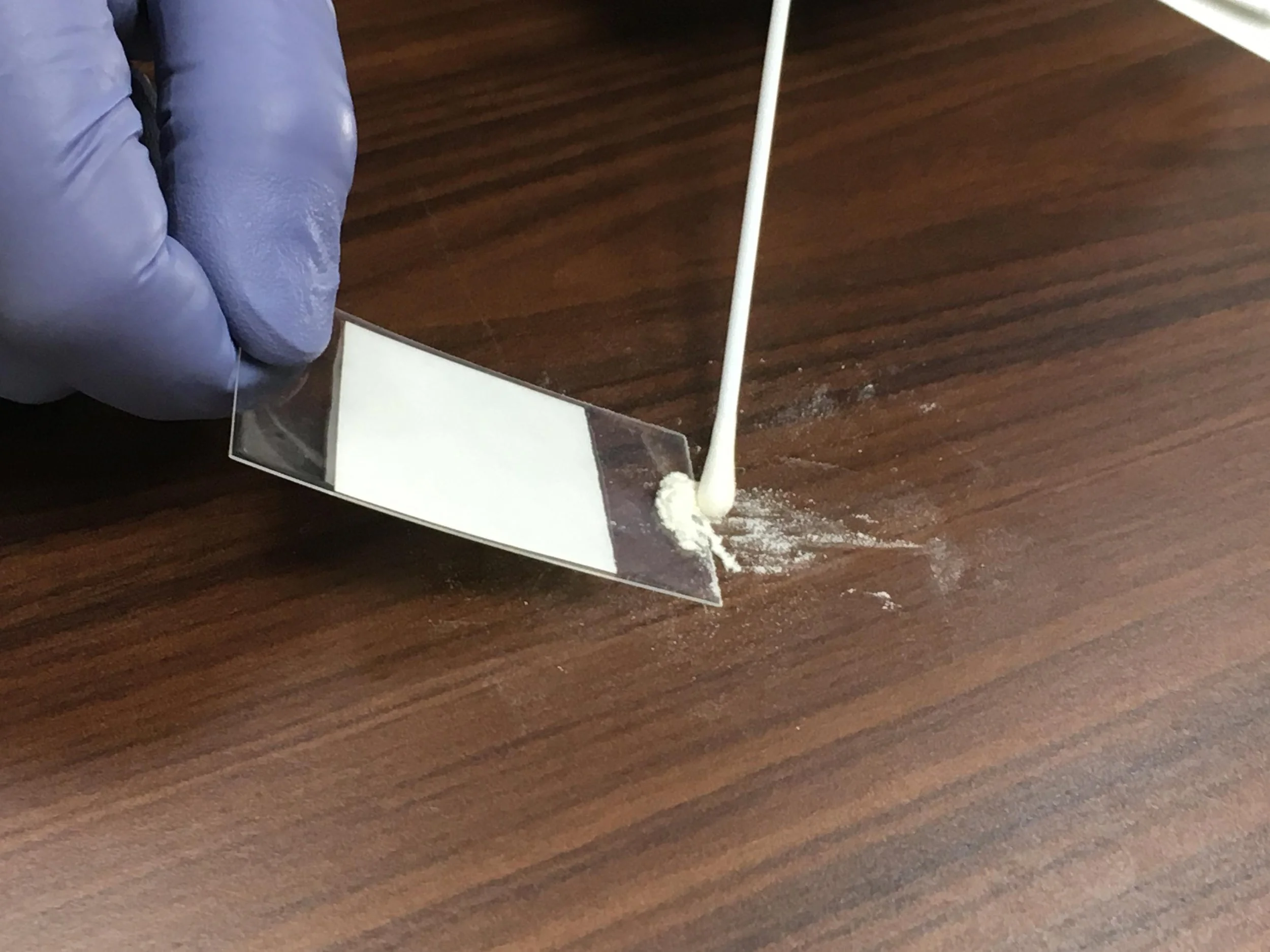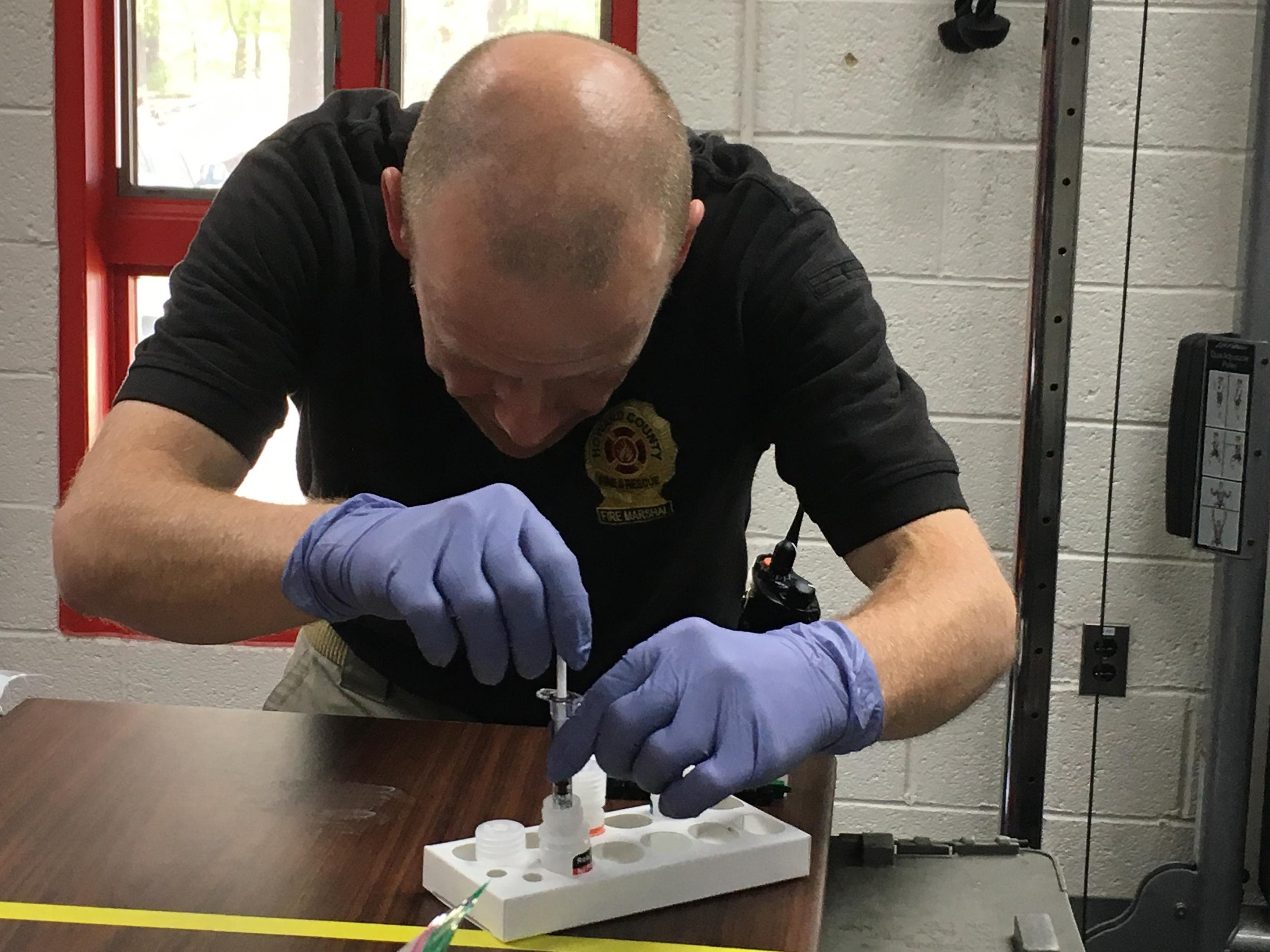Yeast Material Developed to Train First Responders on Biothreats
The yeast reference material was used in a functional field exercise for first responders in a nonpowdered form. The material challenged the entire detection workflow, from sample to answer, and enabled participants to demonstrate their ability to detect a biological material in the field with minimal risk. The field exercise was led by Captain Bryon Marsh (retired, Georgia National Guard 4th Civil Support Team) at Guardian Centers in Perry, Georgia. / Credit: N. Lin/NIST
By Tammy Leytham
As it happens, Baker’s yeast makes a harmless substance to use in training first responders for biological threats such as bacterial or viral pathogens.
Researchers from the National Institute of Standards and Technology have developed a reference material based on yeast cells for use in simulated scenarios.
The yeast reference material was developed to support first responder training against biothreats in a safe manner. The material is crushed into powdered form in a field exercise and still was detectable using proper field protocols and technologies. / Credit: N. Lin/NIST
“Suspicious powder incidents occur regularly throughout the U.S., so first responders need routine training including simulated biothreat scenarios,” NIST researcher Sandra Da Silva said in a press release. “There was a need to make this training accessible while also avoiding exposure to a real pathogen. With support from the Department of Homeland Security, we came up with this yeast reference material to support local training in a safe manner.”
Biothreats fall into three categories based on severity. Category A includes biological agents – such as anthrax – that could pose a national security risk if deliberately released to harm people, animals, plants or other living organisms. Categories B and C include biological threats that are harmful, but less severe.
It can be a challenge to adequately train for an outbreak, and use of a biothreat material poses a risk to first responders involved in the training.
“First responders could choose to take a biothreat agent and inactivate it, so it doesn’t grow or cause disease,” NIST researcher Nancy Lin said. “But it could still be unsettling for the public when they hear that a training exercise in their local area is using anthrax or smallpox, even if you try to explain that it has been inactivated and you’re using it safely.”
In addition, use of actual biothreat agents in training has potential to leave residual material on equipment, which can cause a false positive in a real response situation.
NIST researchers conducted interlaboratory studies with first responders and public health laboratories. In this field study, Jeremy Clancy, Battalion Chief of the Howard County Department of Fire Rescue Services, samples the yeast material in a powdered form using the existing field protocols. / Credit: N. Lin/NIST
Hence, the use of yeast. Responders now have the option to use NIST Reference Material 8230 instead of an actual pathogen.
“Using a nonharmful material such as baker’s yeast, which is used to make bread, can avoid this situation,” Lin said.
Detecting baker’s yeast is not a cakewalk. Yeast is a good surrogate because it provides a challenge to technologies that detect genetic material similar to biothreat agents.
“Baker’s yeast has a thick wall that is hard to crack open to extract DNA, similar to Bacillus anthracis spores (which cause anthrax),” Da Silva said. “We needed something to challenge DNA extraction methods, and the idea of using yeast came from previous efforts on extracting DNA from yeast cells.”
Thus far, lab studies and field tests show the versatility of the yeast. In one study, researchers demonstrated that the material could be crushed into a powder where it remained viable and detectable. Another showed that dried yeast material can be rehydrated and applied to surfaces.
The new reference material, Saccharomyces cerevisiae NE095 for Cell Counting and DNA-based Detection (NIST RM 8230), is now available. Visit the NIST RM webpage to purchase it.



